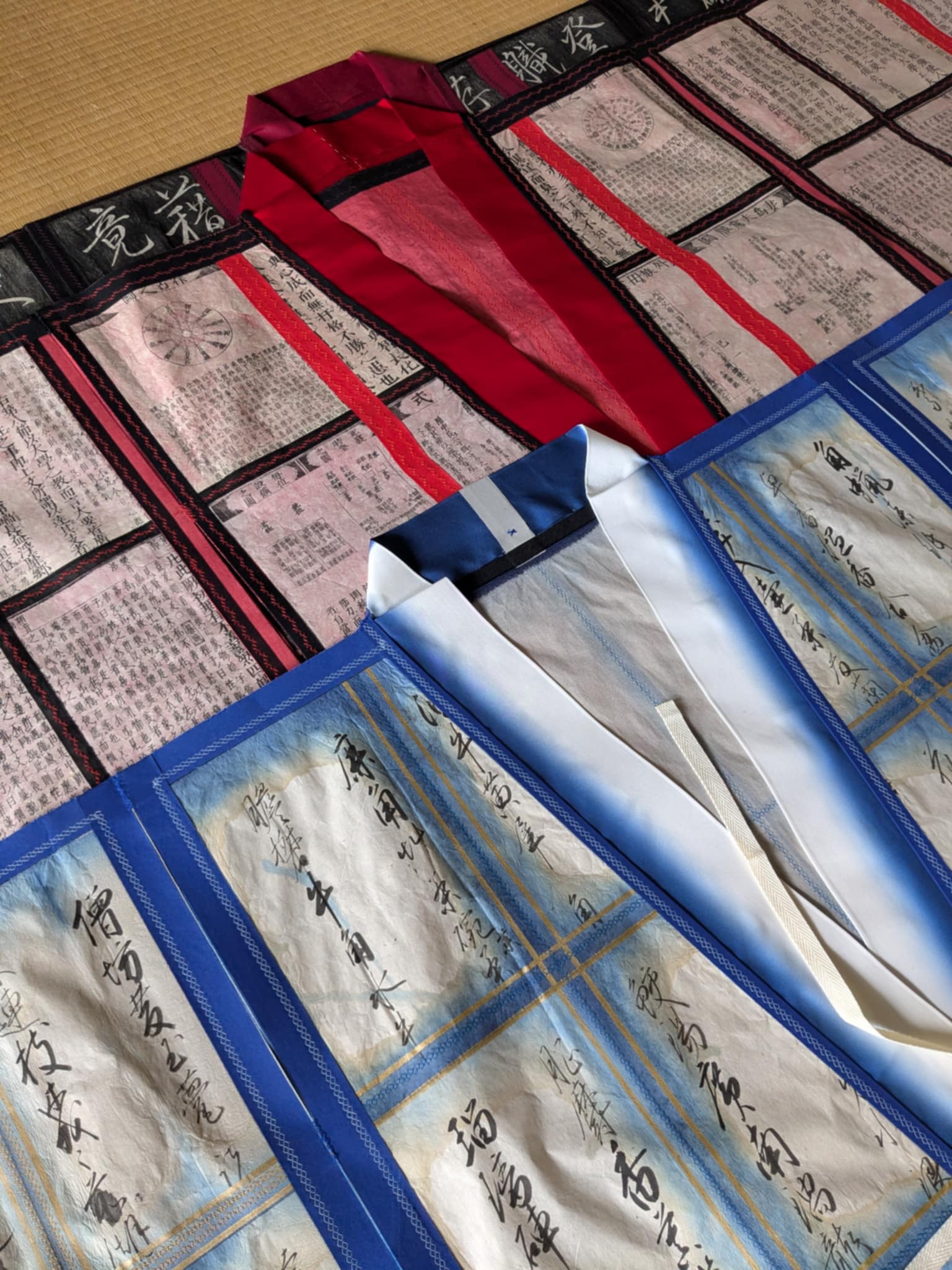Drawing
-

Biennale | Nakanojo 2025 JP
studio :: Stationary garments are produced that can be used by visitors to the Nakanojo Biennale. These are forms of textile architecture that are mounted on wooden frames, hang from the ceiling or standing freely in the room. These textile sculptures, which wrap around the body and extend it like prostheses, can be used by…
-
16 Post War
< > After WWII, Japanese culture became increasingly Americanized. As cloth rationing persisted until 1951, people stopped wearing kimono as they had to be made at home from repurposed fabrics. The Japanese government feared the decline of historic techniques, so in the 1950s, laws were promulgated to protect cultural properties, such as particular techniques of weaving and…
-
15 War Dress
< > Until the 1930s, the majority of Japanese woman still wore kimono, and Western clothes were mainly worn out of home and on certain occasions. As early as 1939, cotton shortages prompted regulations in textile production. Kimono factories shut down, and the government encouraged instead woman to wear monpe trousers constructed from old kimono. Popular women’s magazines provided…
-
14 Imperial Dress
< > In the Japanese colonies Korea and Taiwan, the imperial policy from 1910 onwards required people to undergo cultural assimilation by eradicating their own national identity. This was enforced by the educational systems and policies which also regulated public behavior and clothing. In Taiwan, Western, Japanese, and Taiwanese-style dress coexisted at the same time. Women…
-
13 Double Life
< > Towards the Meiji period, people were trying more to adapt, and at the same time maintain a collective identity. Aware of the changes in society people were trying to reduce the influence of the West by leading a double life 二重生 活 nijyuu seikatsu , with a private Japanese and a public Western part. Yofuku clothing were…
-
12 Western Fashion
< > During Meiji era kimonos imported from Japan became increasingly fashionable in the West. Modern clothing reform movements in Europe and America at the time popularized the kimono as a garment alternative to the tight-fitting corsets. Those were being seen as uncomfortable and unhealthy and also as symbols of confinement of women to their traditional…
-
11 Kimono in the West
< > The international exhibition 1867 in Paris was the first time Japan presented itself as a nation to the world. From then on, the Japanese government sent women in kimonos to the Japanese pavilions to act as hosts. Their exotic clothing inspired Western artists to write books, create paintings and theatre productions. Images of Japanese woman…
-
10 Wafuku
< > The transition to Western-style clothing throughout wider Japanese society happened gradually, with a significant degree of resistance. Until the Rokumeikan period (1883–1890), Western culture grew in popularity, and a number of clothing reforms came to order. After the Russo-Japanese War 日露戦争 and the occupation of Korea, national pride encouraged a return to nativism in which the kimono was…
-
09 Yofuko Western Cloth
< > Clothing was originally referred to as hifuku (被 服) or ifuku (衣 服). The term fukusō (服装) first appeared in a military ordinance in 1874 when the cultural distinction between the Western yo and the Japanese wa was created. Things Western, including clothing, referred to as “yō no fuku” (Western clothes), were seen as symbols of “civilized and enlightened” cultures, and therefore symbols of…
-
08 Textile Industry
< > When around 1864 a disease devastated the silk-producing industries of France and Italy it put pressure on Japanese and Chinese silk producers to fill the increased demand from Europe. Supported by both the government and private sector, Japanese silk exports skyrocketed, and Japan became the world’s leading exporter of silk by 1912. Technology transfer…
-
07 Tailoring
< > In the early Meiji period, Western clothing was expensive, and was worn only by the richest in society. Wool had to be imported, and the need to dress properly for different occasions challenged the Japanese elite. When in 1866, wool uniforms were adopted for the entire army and the production of these uniforms was…
-
06 Clothing Reform
< > Under the strong influence of foreign cultures the government encouraged people to adopt western dress, customs and even changing the diet to include meat. By 1872 government officials and military personnel were required by law to wear Western clothing for official functions. Ordinary citizens, were required to wear a mantsuki kimono with the family crest kamon, on…